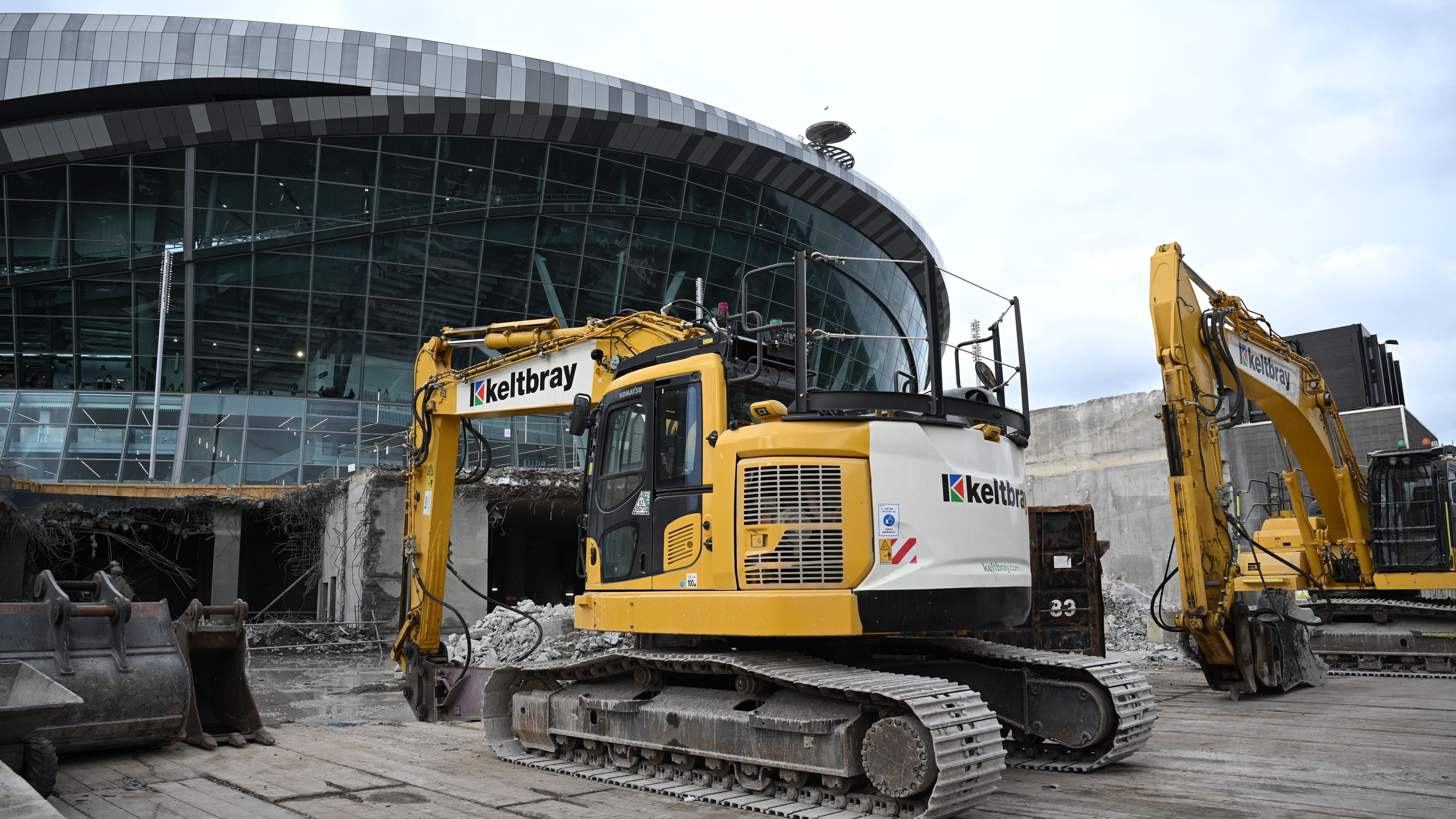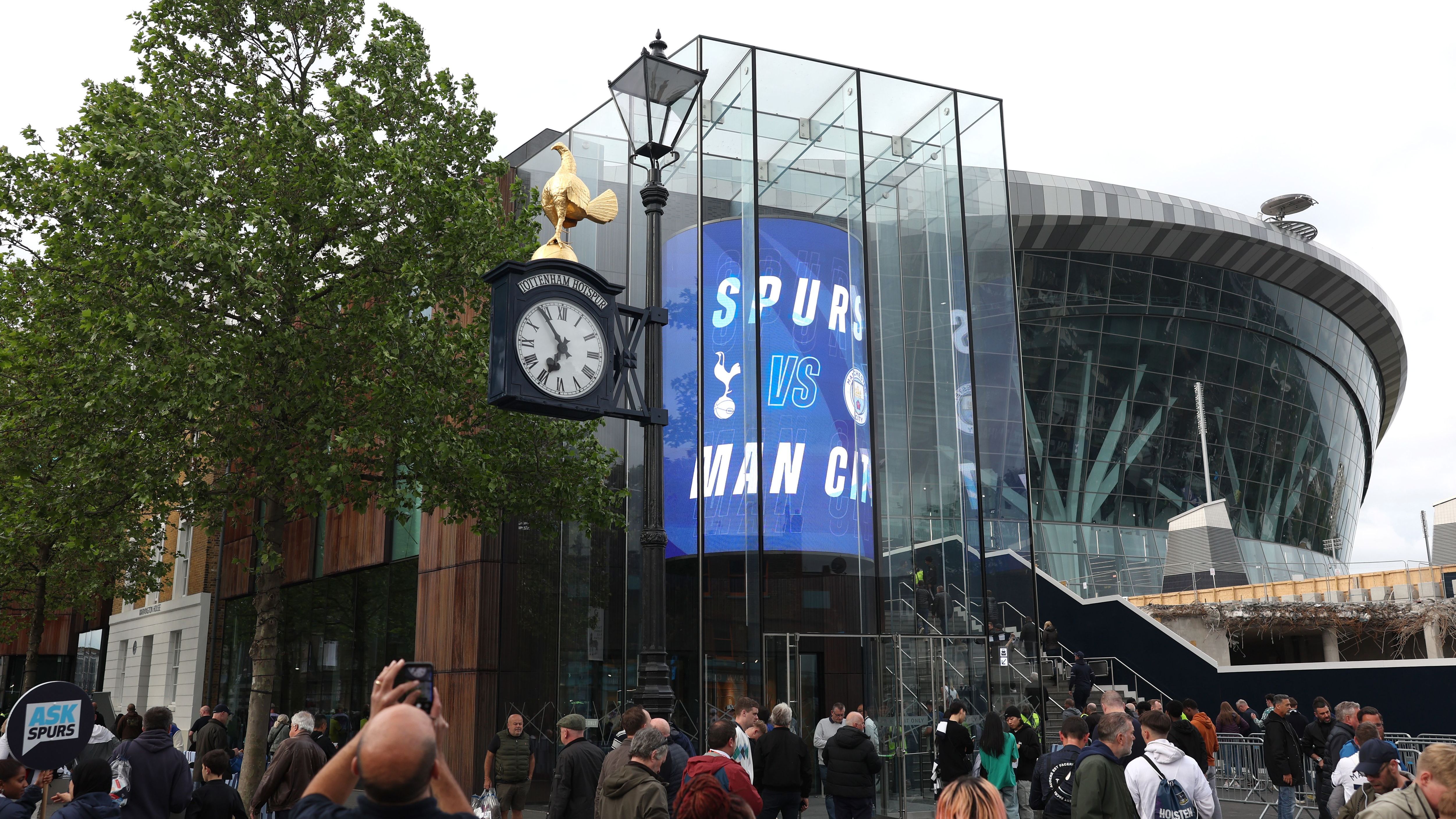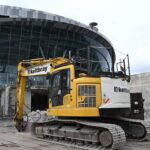Why the Massive Hotel Tower is Igniting Fury Among Tottenham Supporters
Tottenham Hotspur Stadium and the Northumberland Development Project are at the center of a fierce debate over a substantial new structure that might permanently reshape the area’s landscape. This bold endeavor underway is evoking intense feelings from supporters, offering potential advantages while posing significant hurdles for the surrounding community.



Exploring the Northumberland Development Project Around Tottenham Hotspur Stadium
The Northumberland Development Project includes an impressive hotel and residential tower located just south of Tottenham Hotspur Stadium. Originally approved as a 22-storey building, the design evolved and received backing from Haringey Council in late 2023, with further affirmation from the Greater London Authority in early 2024 for a 30-storey version. Building began in August of the previous year and is projected to conclude by June 2028, aligning with major Euro 2028 events at the site. Designed by F3 Architects, the building features a modern, streamlined silhouette and will house a 180-room hotel, 49 residential units, and 64 parking spaces. Aimed at being a top-tier 4-star lifestyle option, it intends to become one of London’s premier conference venues while promoting local development through jobs in hospitality and training initiatives.
Supporter Opinions on the Current Building Efforts
Content creator Chris Cowlin, who frequently covers the club, shared: “HOTEL UPDATE: Next to Tottenham Hotspur Stadium: A 29-storey hotel designed by F3 Architects. Construction is underway, expected to complete in June 2028.”
Reactions to this news have largely been negative, as seen in comments from @footfishbike: “This is ruining the stadium’s view. Such a bad decision.”
Likewise, @ThingsTottenham added: “It will ruin the scenic view along the primary road; I’m totally opposed to where it’s placed.”
Highlighting how it could interfere with the famous location’s appearance, @__LaFlamee pointed out: “This will completely obstruct the stadium from sight.”
Furthermore, @clyne_mar reacted: “A huge hotel so close to where our legendary club began. 🙁”
To sum up the feelings, @Saucysausage666 commented: “There was a time when a football team actually called this spot home 😡”
Here’s a look at the initial phases of construction:
Broadening Horizons for Tottenham: Insights into the Northumberland Development Project
Core Aspects of Neighborhood Revamp
This effort is focused on rejuvenating the vicinity around Tottenham Hotspur Stadium. In addition to the stadium’s versatile pitch for football and American football, the strategy includes major improvements in housing and infrastructure. Notable features comprise four high-rise residential buildings close to the stadium, ranging from 19 to 35 storeys and offering up to 585 homes. The design also incorporates groups of three-storey townhouses. This initiative is part of the extensive High Road West transformation, which involves a thorough update of the White Hart Lane district, managed by Allies & Morrison. The stadium and related initiatives are intended to initiate a 20-year revitalization for Tottenham, with enhancements to public spaces, improved transportation such as easier access at White Hart Lane station, and initiatives to increase jobs and assist local businesses.
Long-Term Opportunities and Advantages for the Community
These enhancements are set to encourage lasting improvements, emphasizing eco-friendly expansion that bolsters the local economy and enriches everyday experiences for local inhabitants.
Tottenham Hotspur’s Recent Performance Leading to Their Next Match
With Tottenham gearing up to take on Aston Villa in the coming days, a win might reinforce their spot among the league’s leaders. Yet, their home games have shown inconsistency recently. The side has only notched three victories in their last 17 Premier League fixtures at home, a pattern that started under previous coach Ange Postecoglou. Additionally, head coach Thomas Frank is up against a challenge, as he hasn’t managed to defeat Unai Emery’s Aston Villa in their five Premier League encounters at Brentford, ending in two ties and three losses.
Unpacking the Debate Over the New Hotel at Tottenham Hotspur Stadium
Around Tottenham Hotspur Stadium, a passionate discussion has erupted regarding the plan for a 29-storey hotel with 180 rooms directly beside the landmark. Supporters are expressing major apprehensions about how this large-scale endeavor might transform the neighborhood and impact their game-day enjoyment. It’s intriguing to observe how such projects can provoke strong reactions from devoted fans, particularly when they believe it could diminish the stadium’s lively vibe.
This issue with the hotel underscores wider challenges in city development around sports arenas, where harmonizing progress with heritage frequently sparks conflicts. Phrases like “Tottenham Hotspur Stadium hotel controversy” are gaining traction as enthusiasts use social platforms and community boards to discuss fears of increased traffic jams, excessive noise, and the disappearance of green areas. Let’s examine these factors more closely to understand the dynamics involved.
Primary Worries Expressed by Fans
Tottenham Hotspur followers aren’t just resisting the hotel without cause; their objections arise from real-world effects that could alter the core of attending matches. Below are key points of contention:
- Traffic and Accessibility: A 29-storey structure might attract more tourists and guests, leading fans to fear greater congestion around the stadium during games. Picture navigating to your seat amid a surge of hotel visitors – it’s a frustrating prospect for those familiar with post-match throngs.
- Visual and Environmental Impact: The hotel’s height could obscure vistas of the stadium and local sites, creating a more confined feeling. Both environmental advocates and fans are worried about the reduction in open areas, potentially harming wildlife and local gatherings[başvurmak:[başvurmak:[başvurmak:[başvurmak:https://www.tottenhamhotspur.no/informasjon/nyheter/]].
- Affordability and Community Displacement: Concerns exist that this project could inflate housing costs in nearby regions, displacing established residents and complicating connections for average fans to the team.
These issues have intensified via supporter networks and digital conversations, likening them to other major projects that overlooked community feedback.
Overview of the Hotel Initiative
The plan for a 29-storey hotel with 180 rooms forms part of a broader regeneration drive to enhance the economy near Tottenham Hotspur Stadium. Although specifics are still unfolding, the development offers modern features like upscale rooms, meeting spaces, and perhaps areas for fan activities. Tottenham has experienced similar growth before, with the stadium’s construction itself dramatically altering the landscape.
Based on available information, the hotel aims to mesh with the stadium’s current setup, possibly providing special offerings for fans, such as pre-match lodging or entry to exclusive zones. Nevertheless, the building’s lofty 29-storeys has sparked questions about its fit with the area’s identity. Fans are pointing to parallel expansions in other locations, underlining the importance of thoughtful design to prevent disengagement from the community.
Essential Facts About the Project
For a clearer understanding, here’s a breakdown of the details:
- Size and Scope: The hotel will include 180 rooms over 29 floors, positioning it as one of the taller buildings locally. It might feature items like rooftop lounges or viewing platforms overlooking the stadium, though this raises concerns for the surrounding views.
- Timeline and Approvals: Work is expected to start shortly, subject to final permissions, prompting fans to voice opinions through campaigns and discussions.
- Economic Rationale: Advocates claim it’s a move to establish Tottenham Hotspur Stadium as a full-year attraction, pulling in crowds for various events outside of football.
Positive Outcomes from the Development
Amid the ongoing dispute, it’s important to consider the advantages for a balanced view. Not all fans are against it – some view it as an opportunity for improvement. The hotel could generate employment in building and hospitality sectors, aiding the local economy. For Tottenham Hotspur, it may lead to extra income via collaborations, supporting enhancements to the team and fan activities.
Furthermore, a cutting-edge hotel near the stadium could boost tourism, inviting global visitors eager to engage with the club’s heritage. Envision unique fan deals, like stays that include access to practice sessions or autographed items. This might evolve Tottenham Hotspur Stadium into a worldwide center, similar to how rival clubs have profited from comparable ventures[başvurmak:[başvurmak:[başvurmak:[başvurmak:https://www.tottenhamhotspur.no/blimedlem/]].
Actionable Advice for Involved Supporters
If you’re a Tottenham fan engaged in this discussion, there are steps you can take to contribute and influence outcomes. Here’s some helpful guidance to manage the process:
- Join Fan Groups and Forums: Link up with fellow enthusiasts via official fan organizations to strengthen your views. Exchanging experiences and planning gatherings can foster a more compelling argument for adjustments[başvurmak:[başvurmak:[başvurmak:[başvurmak:https://www.tottenhamhotspur.no/medlemmer/oss-kampbilletter/]].
- Contact Local Authorities: Communicate with your municipal council or development boards, presenting evidence-based arguments regarding the hotel’s possible effects. Incorporate statistics on traffic flows or ecological reports to support your case.
- Stay Informed: Monitor project updates via trustworthy channels and participate in public forums. This enables you to react promptly and effectively.
Keep in mind, your dedication as a fan can result in real change – the key is directing it wisely.
Lessons from Comparable Stadium Projects
Examining similar cases can offer useful perspectives사 on how these scenarios develop. For example, at Wembley Stadium in London, additions of hotels and commercial spaces have increased event capabilities but also ignited arguments about overcrowding. There, strategic planning helped alleviate fan issues, fostering a smoother blend.
Similarly, the Etihad Stadium zone with Manchester City featured a comprehensive extension with hotels and shops. Although it produced jobs and drew more attendees, initial resistance from residents focused on problems like noise and privacy, leading to modified designs. These instances demonstrate that collaborative talks and refinements can convert disputes into achievements.
Personal Accounts from Tottenham Enthusiasts
From discussions with fans, one individual described the reveal as a departure from the club’s history: “We’ve fostered a community around the stadium, and this hotel might destroy it.” Conversely, a loyal ticket holder noted the benefits: “If it generates more funds, we could get upgraded amenities for families and children.” These individual narratives highlight the deep emotions at play, emphasizing that every project influences actual people. Through these insights, Tottenham can strive for a development that genuinely benefits its supporters.
The Proposed 29-Storey Hotel Near Tottenham Hotspur Stadium
In the heart of north London, the proposed 29-storey, 180-room hotel near Tottenham Hotspur Stadium has sparked heated debates among fans and locals alike. This ambitious development aims to capitalize on the area’s growing tourism and sports events, but it’s not without its share of controversy. Keywords like “proposed hotel near Tottenham Hotspur Stadium” and “29-storey hotel controversy” have been trending as supporters and opponents voice their opinions online and in community meetings.
The project, envisioned as a modern high-rise with luxury amenities, is part of a broader regeneration effort around the stadium. Developers promise it will feature state-of-the-art facilities, including event spaces and rooftop views of the iconic Tottenham Hotspur Stadium. This could enhance the experience for visitors attending matches or concerts, making “fans concerns about the 180-room hotel” a focal point in discussions about urban growth.
Details of the Development Plan
The 29-storey structure is planned to stand tall near the stadium, potentially offering up to 180 rooms designed for both short-term stays and extended visits. According to reports, the hotel would include wellness centers, dining options, and conference facilities, positioning it as a hub for “Tottenham Hotspur Stadium hotel developments.” However, the scale of the building-towering over the surrounding neighborhood-has raised eyebrows about its impact on the local skyline and community feel.
Construction could begin as early as next year, with estimates suggesting it would create jobs and boost the local economy. But as “controversy surrounding proposed hotel” gains traction, details like traffic increases, noise pollution, and the loss of green spaces have become central to the debate. Fans are particularly worried about how a 29-storey hotel might overshadow the stadium’s historic charm, potentially affecting match-day atmospheres.
Fans’ Concerns and the Brewing Controversy
Tottenham Hotspur fans have been vocal about their “fans raise concerns over 180-room hotel” plans, fearing that the development could alter the essence of their beloved neighborhood. Many argue that the hotel’s height and proximity to the stadium might block views, increase crowding, and drive up property prices, making it harder for local residents to afford staying in the area.
Key issues include:
- Traffic and Accessibility: With thousands of fans flocking to games, a 29-storey hotel could exacerbate congestion, leading to longer wait times and safety risks for pedestrians.
- Environmental Impact: Critics point out potential strain on local resources, such as water and energy, and the loss of nearby parks or community areas.
- Cultural Heritage: The stadium holds deep sentimental value, and some fans worry that a massive hotel might commercialize the space, diminishing the traditional fan experience.
These concerns have led to petitions and public forums, with social media buzzing about “controversy Tottenham Hotspur Stadium hotel.” It’s a reminder that while development can bring progress, it often comes at a cost to community identity.
Key Issues Raised by the Community
Diving deeper, fans have highlighted specific “29-storey hotel concerns” through online campaigns and letters to local councils. For instance, groups fear the hotel could become a hub for short-term rentals, potentially displacing long-term residents and altering the neighborhood’s demographic. Another angle is the visual impact-imagine a towering structure looming over the stadium, which could affect the aesthetic appeal for “proposed hotel near Tottenham Hotspur” events.
Moreover, environmental groups have joined the chorus, emphasizing the need for sustainable building practices. Without proper green initiatives, the project might contribute to carbon emissions, clashing with broader efforts to make London more eco-friendly.
Potential Benefits of the Hotel Development
While controversy dominates headlines, it’s worth exploring the upsides of the 29-storey, 180-room hotel. For starters, it could inject vitality into the local economy by creating jobs in hospitality and construction. This “proposed hotel controversy” might actually pave the way for positive changes, like improved infrastructure around Tottenham Hotspur Stadium.
Benefits include:
- Economic Boost: The hotel could attract tourists year-round, not just during match days, supporting local businesses and generating revenue.
- Enhanced Fan Experience: Features like dedicated fan zones or easy access to the stadium might make attending events more convenient.
- Urban Regeneration: As part of a larger plan, it could include public amenities, such as new parks or community centers, offsetting some “fans concerns.”
In essence, if managed well, this development could turn a “180-room hotel controversy” into a win for the community.
Practical Tips for Fans and Local Residents
If you’re a Tottenham Hotspur fan or local resident caught up in this “controversy surrounding proposed hotel,” here are some practical steps to get involved and make your voice heard. Staying informed and proactive can help balance development with community needs.
- Engage with Local Authorities: Attend council meetings or submit feedback online to influence decisions on the 29-storey project.
- Join Advocacy Groups: Connect with fan forums or environmental organizations to amplify your “fans raise concerns” about the hotel.
- Explore Sustainable Alternatives: Suggest modifications, like incorporating green roofs or traffic management plans, to address environmental impacts.
- Stay Updated on Regulations: Keep an eye on zoning laws and building codes that could affect “Tottenham Hotspur Stadium hotel developments.”
These tips not only empower individuals but also foster a collaborative approach to resolving the controversy.
Real-World Advice for Staying Involved
On a more personal level, document your experiences-such as how current stadium access works-and share them in public consultations. This can provide valuable insights for decision-makers navigating similar “proposed hotel near Tottenham Hotspur Stadium” issues.
Case Studies of Similar Hotel Controversies
Looking at other cities, we can draw lessons from past “29-storey hotel controversy” scenarios. For example, the development of a high-rise hotel near Manchester United’s Old Trafford Stadium faced similar fan backlash over traffic and heritage preservation. Ultimately, compromises like reduced building height and added community benefits helped mitigate concerns.
Another case is the hotel project near Wembley Stadium, where “fans concerns about 180-room hotel” led to revisions that prioritized public transport links and green spaces. These examples show that dialogue and adjustments can lead to successful outcomes, turning potential conflicts into opportunities for improvement.
First-Hand Experiences from the Community
Hearing directly from those affected adds a human touch to the “controversy Tottenham Hotspur Stadium hotel.” One local fan shared how a similar project in their area initially disrupted daily life but eventually brought new jobs and vibrancy. “It was tough at first,” they said, “but seeing the community adapt made it worthwhile.”
These stories highlight the emotional side of such developments, reminding us that while challenges arise, community resilience often prevails in “proposed hotel controversy” discussions. By learning from these experiences, fans can better navigate their own situation.









